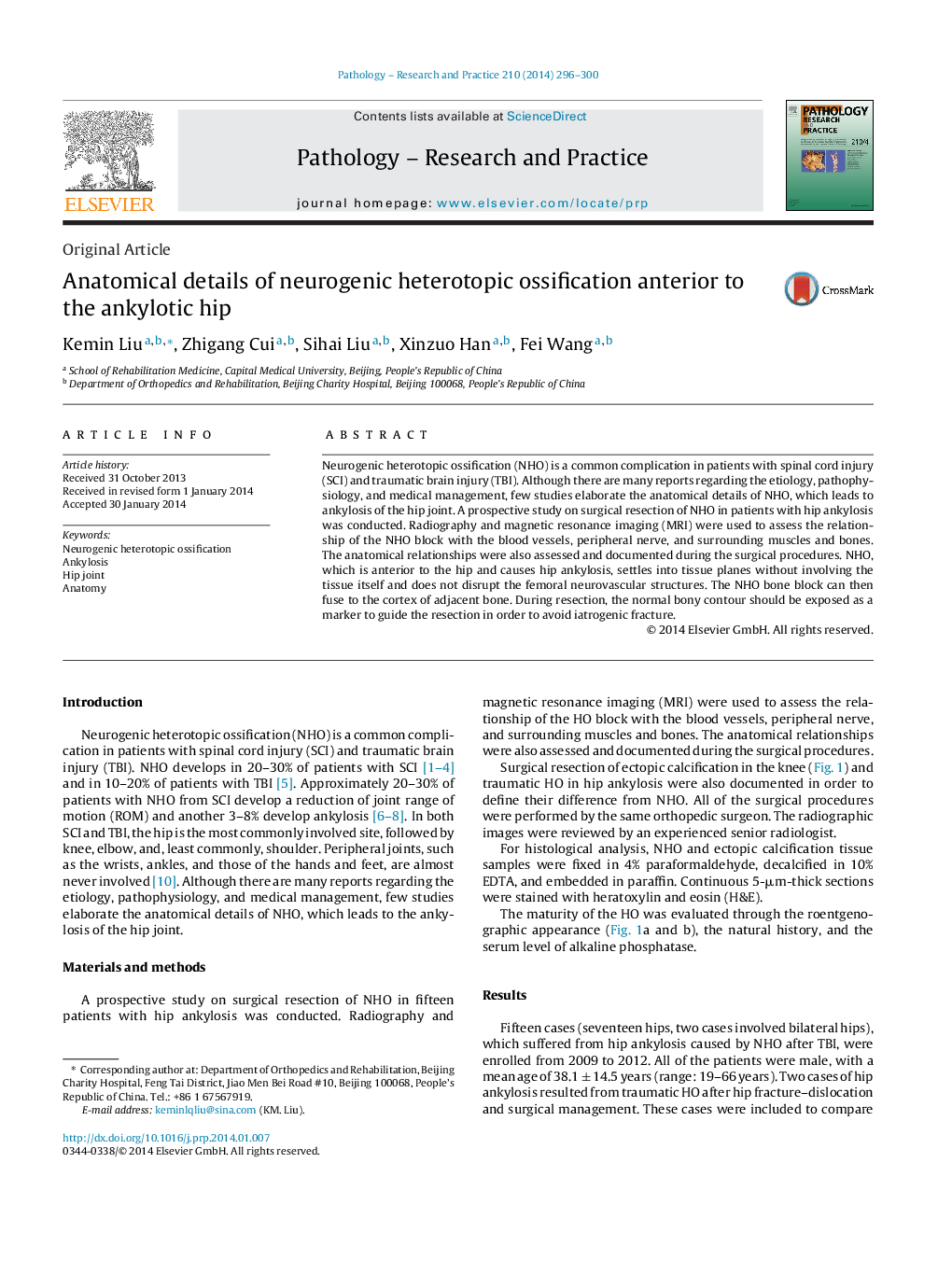| Article ID | Journal | Published Year | Pages | File Type |
|---|---|---|---|---|
| 10916880 | Pathology - Research and Practice | 2014 | 5 Pages |
Abstract
Neurogenic heterotopic ossification (NHO) is a common complication in patients with spinal cord injury (SCI) and traumatic brain injury (TBI). Although there are many reports regarding the etiology, pathophysiology, and medical management, few studies elaborate the anatomical details of NHO, which leads to ankylosis of the hip joint. A prospective study on surgical resection of NHO in patients with hip ankylosis was conducted. Radiography and magnetic resonance imaging (MRI) were used to assess the relationship of the NHO block with the blood vessels, peripheral nerve, and surrounding muscles and bones. The anatomical relationships were also assessed and documented during the surgical procedures. NHO, which is anterior to the hip and causes hip ankylosis, settles into tissue planes without involving the tissue itself and does not disrupt the femoral neurovascular structures. The NHO bone block can then fuse to the cortex of adjacent bone. During resection, the normal bony contour should be exposed as a marker to guide the resection in order to avoid iatrogenic fracture.
Related Topics
Life Sciences
Biochemistry, Genetics and Molecular Biology
Cancer Research
Authors
Kemin Liu, Zhigang Cui, Sihai Liu, Xinzuo Han, Fei Wang,
